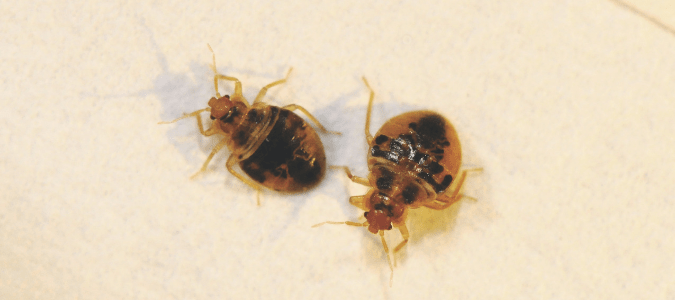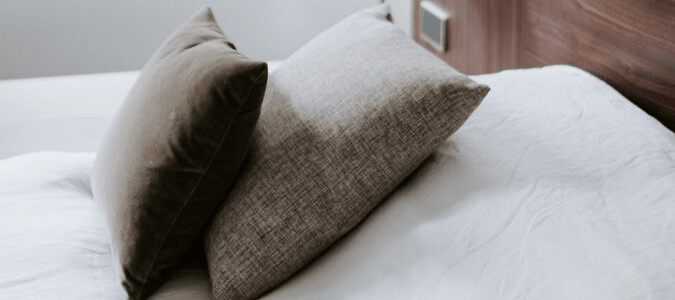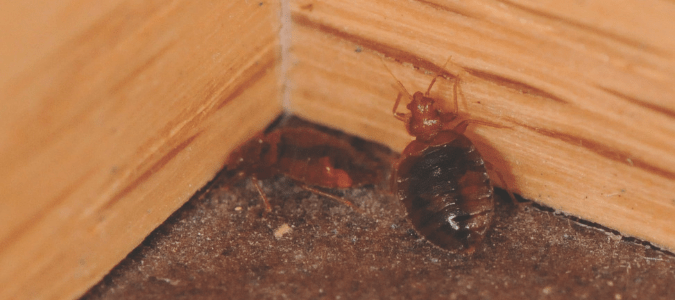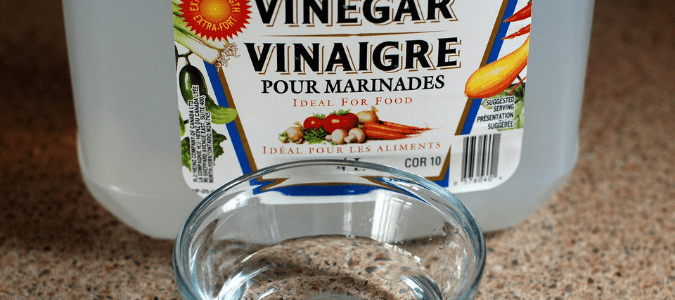
The emotional toll of a bed bug infestation can be significant, in part because these tiny pests are so difficult to eradicate. For one thing, they hide in discreet locations, making them almost impossible to find. If you are currently dealing with bed bugs in your home, you’re probably wondering, what do baby bed bugs look like? Do they bite? And, perhaps most importantly, how can I get rid of these pests?
Baby bed bugs, which are also called nymphs, are actually similar in appearance to their adult counterparts, except for some key differences—mainly their size and their color. After hatching from tiny white eggs that are so small that they are difficult to see with the naked eye, bed bugs go through five stages before reaching adulthood.
First-stage nymphs are tiny (less than 1/16″) and a pale, yellowish-white color. After feeding, baby bed bugs’ abdomens turn red due to the blood they consumed that you can see through their translucent bodies. Bed bug nymphs in the second through fifth stages grow progressively larger and darker in color and develop a darker-brown spot in the middle of their abdomens. Adulthood is the final stage of the bed bug life cycle, at which point the bug is full-sized (about a quarter-inch long, or about the size of an apple seed) and an even, medium-brown color all over.
Of course, if you find yourself in the midst of a bed bug infestation, there’s a lot more you need to know about these pests. Read on to learn all about bed bugs before they are mature, including whether they bite, where they like to hide and what to do if you suspect you have bed bugs living in your home.

Do Baby Bed Bugs Bite?
This is an excellent question, especially considering the intense itchiness and discomfort most people experience after being bitten by bed bugs. Yes, baby bed bugs do bite, although technically, bed bugs don’t bite—they suck. Just like an adult bed bug, a bed bug nymph has a tiny proboscis that it uses to feed on human blood. Baby bed bugs begin feeding on humans as soon as they hatch, and their bites are typically no different from adult bed bug bites in terms of appearance or itchiness. In fact, if you have bed bug bites, it’s even more likely that you were bitten by a baby than an adult bed bug since bed bug nymphs must feed more often than their adult counterparts.
Many people will see tiny bugs in or around their bed and confuse bed bugs with bugs that look like bed bugs. One way to determine what pest has bitten you is by examining the appearance of the bite. Bed bug bites are distinct from mosquito and other insect bites in that they often appear in rows, since bed bugs tend to feed in multiple spots that are closely grouped together. For this reason, bed bug bites are often distinguished by the “breakfast, lunch and dinner” pattern on their victims. Many people also find that bed bug bites are intensely itchy, and that the itchiness can last longer than other bites. Bed bug bites may also develop into tiny blisters, which may not happen with other types of insect bites.
If you find evidence of bed bugs anywhere in your home, you can try to troubleshoot the problem on your own by using a flashlight to inspect the places where bed bugs normally hide. Take a close look at the seams of your mattress, as well as in the creases of upholstered couches and chairs, or even on wallpaper in the bedroom or living areas. If you see tiny blood stains on your mattress or sheets, dark, rust-colored spots on the bed or the walls nearby, bed bugs themselves or shed bed bug skins, you may have a bed bug infestation.
Should you be worried about bed bug shells?

What Are Bed Bug Shells And What Do They Look Like?
Earlier in this post, we had explained that bed bugs pass through five life stages before they become an adult. As they progress from one stage to the next, these creatures molt, leaving behind shells, which are also known as casings or exoskeletons. Like some other types of insects, the bed bug’s exoskeleton doesn’t grow as they grow, so they must shed this outer skin as they get bigger and bigger. Bed bug shells look just like the bugs themselves. However, because there is no actual body, this skin may look more translucent than a normal bed bug. Also, the age of the bed bug when it sheds will affect the color of the shell, so a shell’s color can range from a gold-yellow color to a light brown color.
Unfortunately, if you are finding bed bug shells, this probably means that you have an infestation. Any bed bugs you bring home with you will be adults, so when you start finding an increasing amount of shells around your home, this is a sure sign these bothersome pests are multiplying.
If you haven’t already, contact a pest control specialist to conduct a thorough inspection, confirm that you do, in fact, have bed bugs living and breeding in your home and develop a plan for eradicating them for good. An experienced pest control professional will approach a bed bug infestation in a comprehensive way that will kill off not just adult bed bugs, but nymphs and eggs as well, to protect you from a recurrence.
If you suspect you have bed bugs one of your bedrooms, how long do you have before you are dealing with a full-home infestation?

How Fast Do Bed Bugs Spread From Room To Room?
Unfortunately, experts can’t always predict how quickly an infestation can develop. Bed bugs usually won’t move if they find a good food source nearby. That said, if one is hiding out in a chair in your dining room and you move it to the living room, the bed bug will then occupy that space. As a matter of fact, bed bugs are usually introduced into a new home or area when they accidentally get brought in on suitcases and luggage. Another common way for bed bugs to invade homes is through second-hand furniture.
When bed bugs do decide to move on their own, it is usually because the area they were living in has become crowded and they’re looking for a new food source. In these situations, these creatures can travel up to four feet per minute. While this may seem slow to us, due to their tiny size, this is actually the equivalent of a human sprinting.
While bed bug infestations are often associated with hotels and motels, and more generally with travel, even homebodies can have unfortunate encounters with these wily little creatures. Furthermore, even the cleanest of homes can fall victim to a bed bug infestation, although it is true that having more clutter makes it even harder to spot bed bugs if you do have an infestation.
Whether you’re waiting for a specialist to come to your home or you want to see if you can deal with the problem yourself, there are some DIY methods that are rumored to kill bed bugs. Are they effective?

Does Using Vinegar For Bed Bugs Work?
Many homeowners are on the lookout for low-impact pest control solutions. When evaluating different home remedies, you may wonder if using vinegar to control a bed bug infestation really works. Or, does lavender really repel bed bugs? Unfortunately, there is very little scientific evidence to support the claims that you can manage a bed bug infestation using these common household items. In addition, successfully battling a bed bug infestation can often take weeks—and even months. Given how emotionally draining these infestations can be, choosing the right course of treatment from the outset can minimize the inconvenience and psychological toll of having to deal with this type of pest probem.
The Environmental Protection Agency suggests three non-chemical treatment methods to eradicate bed bugs: heat treatment, cold treatment and steam cleaners. Heat treatments are best administered by professionals using a whole-house approach that kills bed bugs in all life stages hiding in all the cracks and crevices in your home. In some cases, you can put clothing, bedding or wall hangings into your dryer on high heat to treat these items. Items can also be placed in a sealed bag in a freezer that is kept at zero degrees for four days. Steam cleaners can be used on bed frames, carpets, furniture and baseboards at 130 degrees, although experts recommend using a diffuser because bugs can scatter with more forceful air pressure.
If you do want to try using vinegar for a bed bug infestation, there are some things you should know. Directly spraying vinegar on bed bugs might kill these creatures, as vinegar is strongly acidic and capable of harming many insects’ nervous systems. Vinegar is not an effective way to treat a bed bug infestation, because the substance must make direct contact with the bed bugs in order to kill them. This means any bugs, nymphs and eggs that are missed in the vinegar’s spray will not be effective. Also, the bugs which manage to avoid the spray will often go deeper into the seams of whatever they’re hiding in and may stay hidden away until they come back out to feed when they feel it is safe again. Lastly, many people prefer not to use vinegar for bed bugs since the smell is so strong, especially if you have a full-on bed bug infestation and must spray a lot of vinegar in multiple areas of your home.
When dealing with a pest as prolific and relentless as bed bugs, your best option is to bring in a professional who can assess your situation and implement a comprehensive bed bug management plan.
ABC Can Handle Your Bed Bug Problem
Bed bugs reproduce quickly, and eggs can survive many types of pest control techniques. If you have a bed bug infestation, or you’ve found bites or other possible signs of bed bugs, call in the professionals from ABC Home & Commercial Services. Our pest control specialists have extensive experience eradicating bed bug infestations. We will conduct a thorough inspection of your home to confirm bed bugs are present, and we will work with you to determine the best methods for getting rid of these so you can rest easy again.